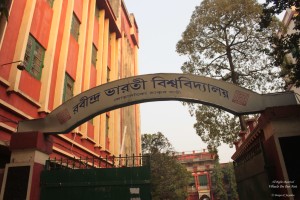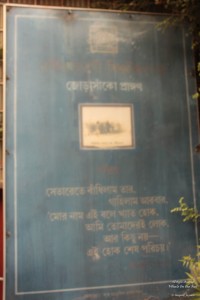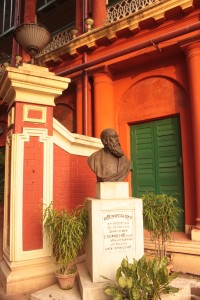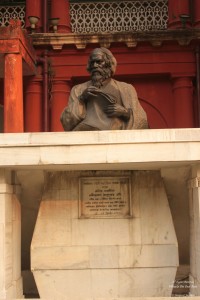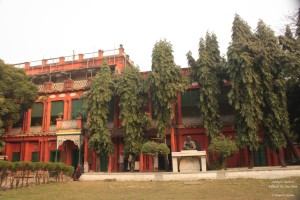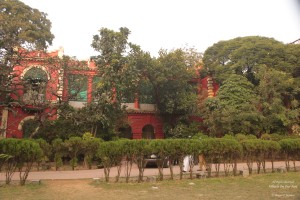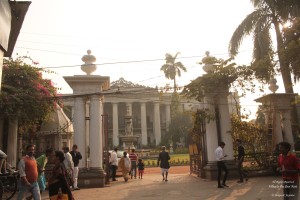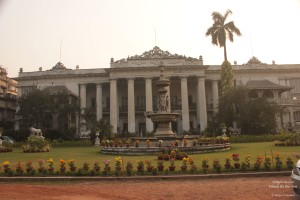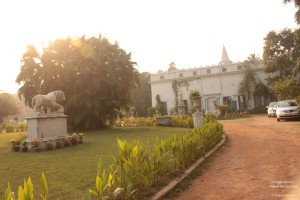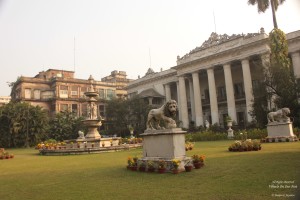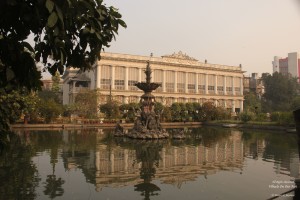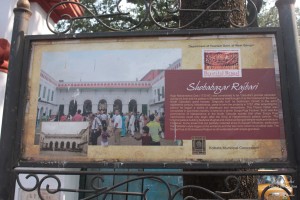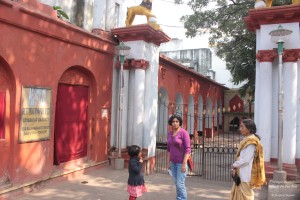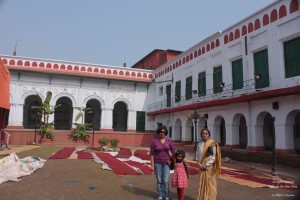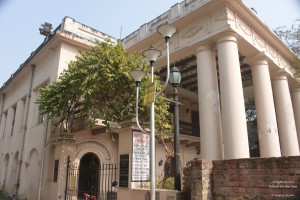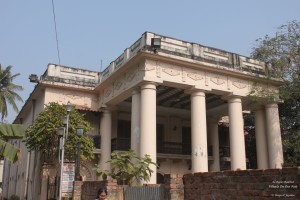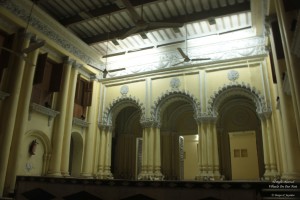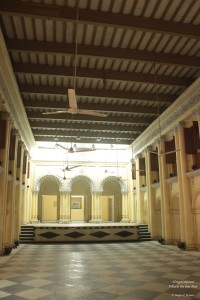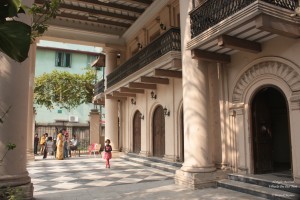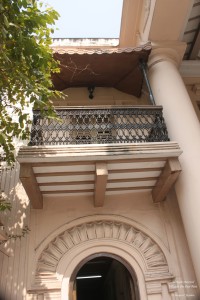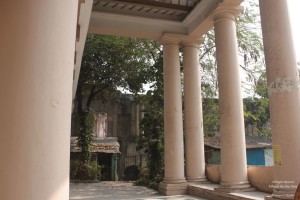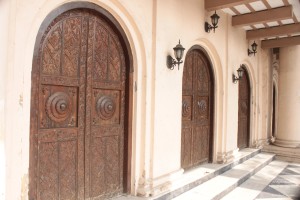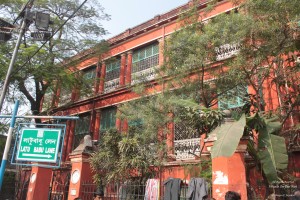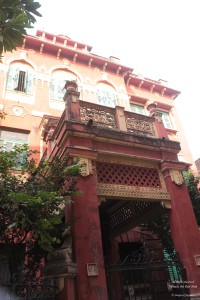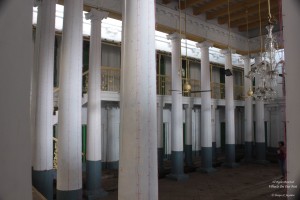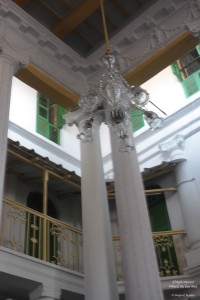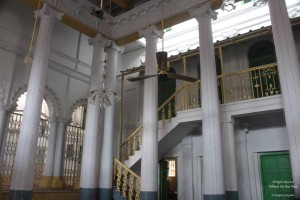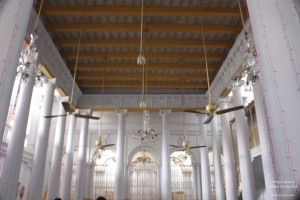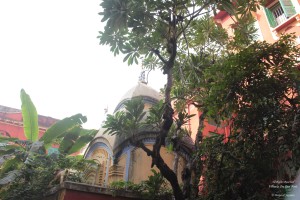North Kolkata is a treasure trove of history and stories. It takes you back to the era when Kolkata, nay, Calcutta, was at the helm of affairs in India. From tales of royalty to those of the illustrious, from narrow bylanes to majestic ruins that once were majestic houses, from beautiful balustrades in those ruins to imposing courtyards that would have been witness to a chunk of history, you are sure to lose yourself while on an exploration mode here.
Although every other year during the merciless winters in Shillong, we would come away to our Mama-Bari (Grand-parents’ house) in North Kolkata, we somehow missed finding out about the area’s heritage. Guess you can blame the different times, different priorities of the 1980s era. And so, while we had seen the customary Victoria Memorial, Birla Planetorium, Boi Mela and the significant others, here was one piece that had stayed completely off our itinerary – we hadn’t seen North Kolkata beyond the shopping streets of Shyam Bazar and the book-filled streets of College Street. That changed, finally, during our last Kolkata trip – we singled out a mellow wintry morning, spoke to an all-knowing relation, booked a cab and set off to discover what was precious in thebylanes of North Kolkata. And this is what we found:
Jorasanko Thakur Bari — We had been enamoured by our trip to Shantiniketan (Read all about our Shantiniketan tour in our Shantiniketan Tour posts). Jorasanko, then, became an imperative to round up our ‘onsite’ education. Despite the traffic of the congested Girsh Park streets that lead you to the Thakur Bari, you are transported to the world of the Tagores as soon as you enter the premises of Bengal’s most famous house.
- Jorasanko Thakur Bari
- Jorasanko Thakur Bari
- Jorasanko Thakur Bari
- Jorasanko Thakur Bari
- Jorasanko Thakur Bari
The greater part of the house has been transformed into a museum – you will see here the room where Rabindranath Tagore was born, the room where he stayed, his set of pen, paint brushes, stories about him and his times, and more. We loitered around a long time, both in the museum and the enclosed courtyard, being completely numbed by the thought of walking the same grounds the Bard had once walked, touching the same walls He had once touched. And wished we could come over during the many festivals that Rabindra Bharati University observes here…..
Note: Photography inside the Jorasanko Thakur Bari is not allowed. You can, however, take photos of the grounds.
Marble Palace — This stumps you completely! One moment you will be meandering through extremely narrow lanes around the Shobha Bazaar area, and the next moment you will see this majestic palace with extremely lavish lawns!! And the first thought that will strike you is, “How?” You then find out that the Marble Palace was built in the first half of the 19th Century by a rich merchant, is filled with artifacts and sculptures from all around the world and is still owned by descendants of the family who debar you from taking any photographs of the inside of the mansion. And so we consoled ourselves with these few outdoor photos. The rest, for your eyes and memories only….
- Marble Palace in North Kolkata
- Marble Palace in North Kolkata
- Marble Palace in North Kolkata
- Marble Palace in North Kolkata
- Marble Palace in North Kolkata
A 3-storey mansion, Marble Palace has its walls and floors made of, what else, marbles! It is house to extremely elegant Victorian pieces of furniture and many many sculptures and paintings from around the world, a big courtyard, a temple that is open only for family members, well laid out grounds, a mini lake, a zoo and even a rock garden. The owner sure had a rich taste! Pity then, that you can’t take photos to your heart’s content. The Palace however charges no entry fee, and you can visit between 10 am to 4pm every day of the week other than Thursdays and Sundays.
Shobhabazar Rajbari — One of North Kolkata’s most popular destinations, Shobhabazar Rajbari is also famous for its annual Durga Puja celebrations. If you happen to go there during any other time of the year, as we did, you will have to contend with its towering columns and imposing courtyard. And some pieces of its history that proves its allegiance to the British rule, and it being one of the important seats of Bengal’s renaissance. The Rajbari also has a Nat Mandir adjacent to it. We spent a long time chatting to one of the descendants of the family, who now takes people for Heritage tours.
- Shobhabazar Rajbari
- Shobhabazar Rajbari
- Shobhabazar Rajbari
- Nat Mandir of Shobhabazar Rajbari
- Nat Mandir of Shobhabazar Rajbari
- Nat Mandir of Shobhabazar Rajbari
- Nat Mandir of Shobhabazar Rajbari
- Nat Mandir of Shobhabazar Rajbari
- Nat Mandir of Shobhabazar Rajbari
- Nat Mandir of Shobhabazar Rajbari
- Nat Mandir of Shobhabazar Rajbari
ChatuBabu Latubabur Baari — Another of those Bonedi, meaning heritage, homes of Noth Kolkata, this house and the mandir belonged to one of Kolkata’s richest businessmen, Ram Dulal Babu. In modest condition presently, the house is still known for the Durga Puja it celebrates every October.
- ChatuBabu Latubabur Baari
- ChatuBabu Latubabur Baar
- ChatuBabu Latubabur Baar
- ChatuBabu Latubabur Baar
- ChatuBabu Latubabur Baar
- ChatuBabu Latubabur Baar
- ChatuBabu Latubabur Baar
Kumortuli — But of course! Kumortuli. Where Gods are made. Where you can lose yourself in the excitement of seeing the Kumors’ creations, creativity, patience and resilience. A place where photographers find endless subjects to shoot. I have a detailed post that describes our tour of Kumortuli. You may read it by clicking this link – Tour of Kumortuli.
And when in North Kolkata, there is no way you should miss having Sandesh at Girish-Nakur. Here’s where you can find them — Girish-Nakur — For the best Sandesh in Kolkata


